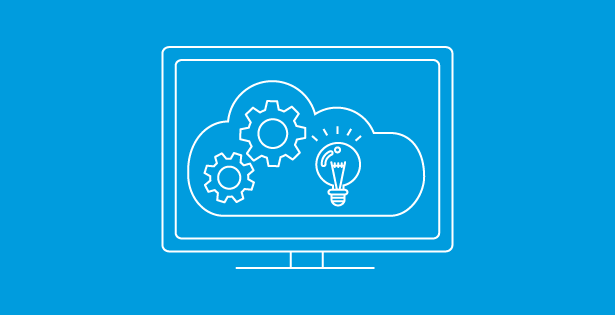AI is rapidly transforming the marketing landscape. Marketers are under intensifying pressure to drive growth and demonstrate tangible impact. Even with the promise of AI shining bright, many marketers remain uncertain about where to begin or how to overcome the barriers of siloed data, legacy systems and disconnected teams. In this post, we explore how Salesforce Marketing Cloud Engagement can serve as a launchpad for AI. We will discuss a practical scaffolding approach to AI adoption and steps to break down silos, empower teams and drive measurable results.
First, a quick Marketing Cloud Engagement overview. Marketing Cloud Engagement is a powerful marketing automation platform that allows marketers to create automated user journeys across multiple channels such as email, SMS and social media to deliver personalized messages. Marketing Cloud Engagement has a variety of AI-powered features built into the platform that marketing can start exploring today. Salesforce is innovating with Agentforce and Data 360 to bring advanced AI-features to customers. However, we want to showcase the capabilities you can start leveraging today in this post. Let’s dive in!
The Strategic Role of AI in Modern Marketing
AI can be a strategic tool helping marketers achieve broader organizational goals. With the explosion of customer data across channels, marketers are now stewards of vast amounts of information. AI enables teams to interpret and act on this data quickly, meeting the rising demand for hyper-personalized, real-time experiences. It also helps connect marketing activity to organizational outcomes and achieve operational efficiencies.
Aligning AI initiatives with core organizational objectives such as brand growth, customer engagement, or revenue acceleration is important to maximize impact. Examples include:
- Brand Growth: Use generative AI for content creation at scale.
- User Engagement: Personalization engines ensure relevant messaging.
- Revenue Acceleration: Predictive analytics identify high-value segments and buying signals.
Ways to Get Started
The best place to start is with your current marketing tools. First, listen for pain points your marketing team may be experiencing. When talking with marketing teams, a common theme we hear is they want to leverage AI but they seem to be running into challenges. Common pain points may include:
- Dirty Data: Teams don’t trust their data.
- Manual Processes: Data is moved manually between systems.
- Disjointed Experiences: Difficulty personalizing communications.
- Reporting Challenges: Hard to get full-funnel metrics.
These pain points point to technology and data silos. It’s important to address these silos because data is the fuel to AI and having clean, complete data is key. Introducing integration and having a unified data model allows your team to shift from manual processes to automating AI-powered user journeys.
Building Your MarTech Roadmap
Let’s start breaking down those silos! Audit your current marketing tools and identify where integration exists and where it doesn’t. Doing an audit will start to show why those symptoms exist. For example, you may find that your marketing automation tool isn’t integrated into your CRM, leading to your marketing team manually pulling lists.
Many marketing tools like Marketing Cloud Engagement already have AI capabilities baked into the platform. During your audit, be sure to capture what you have available at your fingertips today. This is a great on-ramp for your staff to start familiarizing themselves with AI.
Once you complete your audit and understand your current state, you can start to plot out how your team can introduce AI in a systematic and digestible way. This scaffolding approach allows you to bring your marketing staff along and skill up as they get more comfortable with AI. It also allows you to test AI approaches and build upon learnings.
AI in Action: Salesforce Marketing Cloud Engagement
As mentioned, Marketing Cloud Engagement has a variety of AI-powered features baked into the platform under the Einstein name, including but not limited to copy and messaging insights, content selection and engagement scoring. Here are three features that can be used in Marketing Cloud Engagement to launch your AI initiatives:
Generative AI
Let’s take a look at some examples of the AI capabilities already baked in and available in Marketing Cloud Engagement. You can leverage generative AI to create content whether that’s body copy or Subject Lines. This can be a great way to quickly spin up a variety of copy options to test, and it’s an easy entry point to augment your marketing staff and use AI.
Send Time Optimization
When your staff is ready for a more advanced use case, Marketing Cloud Engagement allows you to start building automated, AI-powered journeys. Again, your data is the fuel to your marketing platforms. It’s important to have complete and accurate data to power these journeys. Leveraging the Send Time Optimization option in Journey Builder to optimize send times for each individual contact can be an easy entry point and help increase engagement. You can also use a random split in your journey so your team can easily test this AI approach.
Frequency Split
You can continue leveling up and building dynamic journeys by leveraging frequency splits. These splits use the Einstein Engagement Frequency predictive model to automatically route contacts down different paths depending on their individual engagement levels. This activity is designed for you to send the optimal number of messages to every contact, reducing fatigue and increasing engagement.
Conclusion
AI is best utilized when paired with human expertise. By systematically integrating AI into your marketing practice, you can empower your team, break down silos and drive meaningful outcomes. AI enablement is an ongoing process and it looks different for each organization. Start where you are, leverage what you have and build from there. If you need support getting started with Salesforce Marketing Cloud or AI, reach out today.

 RSMUS.com
RSMUS.com


